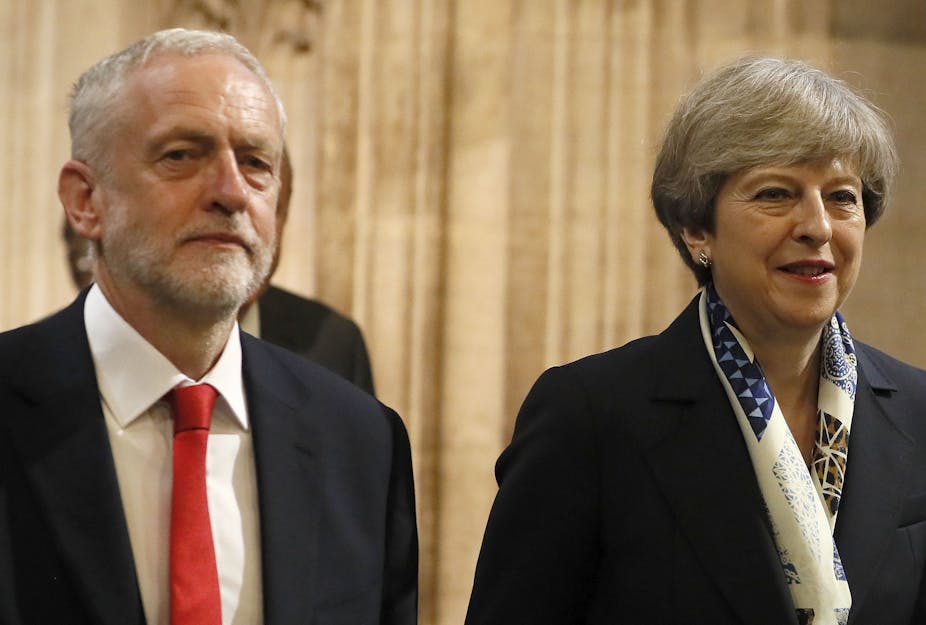Conservative MP Anna Soubry recently floated a idea that to some might seem radical: establish some kind of all-party “national unity government” to avoid a no-deal Brexit. But what are the prospects for such a project, what form might it take, and what would be the political implications?
To help answer these questions, it is useful to consider some historical precedents. On occasions over the last century or so, at moments of national crisis, politicians of the main parties at Westminster have come together to form governments intended specifically to address the threat.
There are three particular examples that stand out. In World War I, a coalition formed first under Herbert Henry Asquith in 1915 and then David Lloyd George in 1916. Then, in 1931, faced with a sterling crisis, the Labour government of Ramsay MacDonald collapsed and was replaced by a national government under his leadership. And in 1940, Winston Churchill came to power during World War II as head of a newly formed coalition.

Based on these examples and other aspects of the constitution, a number of observations about the current prospects are possible. First, the most important principle for the formation and maintenance of any government is that it possesses the confidence of the House of Commons (though that need not entail winning every single vote). The House of Commons can, if determined enough, bring about the establishment of a coalition government. And so long as such a government possesses that confidence, it can continue to function.
Alternatively – and perhaps more likely – rather than the House of Commons taking a direct initiative, a deal between senior politicians could command that confidence. A national unity government against a no-deal Brexit, then, is plausible in as far as a majority of MPs appear to be opposed to exit without a deal coming about. Indeed, such an administration, if it were backed by all of the “anti-no-deal” MPs, could well enjoy an absolute majority in the House of Commons, unlike the current Conservative government, which is in a Commons minority and reliant on support from the Democratic Unionist Party.
The formation of a national unity coalition may also involve an existing prime minister ending one government and forming a new one (as, for instance, MacDonald did in 1931). Alternatively, it may entail a change of prime minister (as when Churchill first came to the premiership in 1940). In other words, this coalition, if it came about, could be led by Theresa May or by someone else. That person might come from the party providing the most MPs (like Churchill in 1940) but need not do so (Lloyd George from 1916; MacDonald from 1931). They could be a party leader (Asquith in 1916); but might not (Churchill in 1940). Much would depend on the circumstances of the time and the personalities involved: who was willing to serve under whom, whether a suitable leader other than the premier was judged to have emerged; whether the existing prime minister was regarded as tainted and if so was willing to step down quietly, and so on.
Can party rivals unite?
Then there is the more problematic aspect: party. The reason a national unity government is being discussed at all is that, though a majority of MPs appear to be opposed to a no-deal Brexit, they are spread across different parties. However strongly they feel about avoiding what they see as a disastrous outcome, they are influenced by other factors as well. The prospects for the formation of any coalition inevitably turn on relations within and between different parties.
Under the adversarial political system of the UK, and given a parliamentary voting system that can often lead to single-party governments, there is a greater resistance to this kind of collaboration than in many other European systems. In the period since 1945, there has been only one full coalition, that of 2010-2015, and it did not include the Labour party so doesn’t qualify as a national unity government.
When they have come into being, national unity coalitions have sometimes been associated with serious party political splits, such as that which occurred in 1916 when Lloyd George supplanted his Liberal colleague Asquith as prime minister, or in 1931 when MacDonald opted to form a National government, breaking with Labour.
The coalescence of the “anti-no-deal” MPs behind a national unity government, either at the request of May or as part of her replacement with a different prime minister, would seem to involve some kind of fissure in at least one of the Conservative and Labour parties. While much would depend on the precise circumstances that triggered such an event, is seems likely that a sizeable proportion of Conservative MPs would oppose the initiative. It’s also unlikely that the present Labour leader, Jeremy Corbyn, would be the figure around whom pro-European Conservative (or indeed Labour) MPs could rally.
A government intended to achieve unity for the UK would therefore involve disunity for both the main parties (though smaller parties such as the Liberal Democrats might potentially be able to join with less difficulty, though their recent experience of coalitions might be discouraging). The historical portents are again worth considering here. The Liberal Party was severely divided by the coalitions of World War I, after which it ceased to be one of the two main political parties. Labour was seriously damaged by the split of 1931 created by the formation of the MacDonald National government. Indeed, it took participation in the Churchill coalition from 1940 for it to return to office.
The lesson for today would seem to be that national unity governments are difficult to create. And when they do come together, the party political consequences can be divisive, extensive, and lasting. However, if an issue becomes pressing enough, even these considerations can be put to one side.

